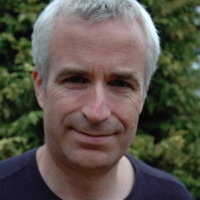The future of audiology – using high-frequency hearing tests to diagnose hearing loss
This year as we celebrate the 100 year anniversary of Deaf Education and Audiology at the University of Manchester our BRC researchers share their insights and hopes for the future of audiology. In his blog Professor Chris Plack discusses the importance of measuring hearing sensitivity at very high frequencies, beyond the range normally tested in the clinic.
Why should we measure high-frequency hearing?
The standard hearing test performed in the clinic is pure-tone audiometry. This measures the sensitivity of the ear to quiet tones at different frequencies; typically from 250 to 8000 hertz (Hz). However, the healthy human ear can detect sound waves with frequencies up to 20000 Hz, considerably higher than the range tested in the clinic. The range of frequencies above 8000 Hz is called the “extended high-frequency” range. This range is higher than the range that contains most of the information that is important for understanding speech. So why should we bother measuring hearing sensitivity at these very high frequencies?
Perhaps the most compelling argument for audiometry is that extended high-frequency audiometry may be especially sensitive to the early effects of hearing damage.
Two young people might have identical good hearing sensitivity on the standard clinical test, and both would be diagnosed as having “normal” hearing. But their sensitivity in the extended high-frequency range may differ dramatically, perhaps because one person regularly attends live music events without hearing protection. The individual who has worse extended high-frequency sensitivity may have already experienced damage to their hearing, which could become serious if they continue with their listening behaviour.
Thresholds at extended high frequencies may also tell us about damage at lower frequencies that aren’t detectable using pure-tone audiometry. There’s evidence that extended high-frequency hearing loss is associated with difficulty hearing speech in a noisy environment (for example, at a pub or party). This might be because the cause of damage at extended high frequencies also produces damage to the auditory nervous system at lower frequencies that affects hearing ability, without reducing sensitivity to quiet tones.
Studies at Manchester
At Manchester Biomedical Research Centre we are particularly interested in how recreational noise exposure (for example, at live music events, nightclubs, and from listening to music over earphones) may be damaging young people’s hearing. As part of our hearing research, we now routinely perform extended high-frequency audio tests, and we have evidence that this may detect the early effects of noise damage.
In future work we hope to test teenagers over several years as they experience their first live music events. This will tell us whether extended high-frequency audiometry is a useful measure of early hearing loss, and a predictor of future listening difficulties. I have a particular personal interest in this as I have been in rock bands most of my life, and am well aware of the damaging effects of loud music on my own hearing. It would be great if we could find a way to detect early signs of damage, and give young people the advice they need to prevent serious hearing loss.
We are also investigating how radiotherapy treatments for cancer in the head and neck range affect hearing sensitivity, and how the radiation direction can be changed to protect the ear while destroying the tumour. Again, for this research we are particularly interested in testing at extended high frequencies, to find the earliest indicators of hearing damage.
Although more research needs to be done, there’s promising potential for extended high-frequency hearing testing in the diagnosis of hearing loss. Measures at these frequencies could be particularly important for identifying individuals at risk, allowing clinicians to provide personalised healthcare advice or modify treatments to prevent future hearing loss.
